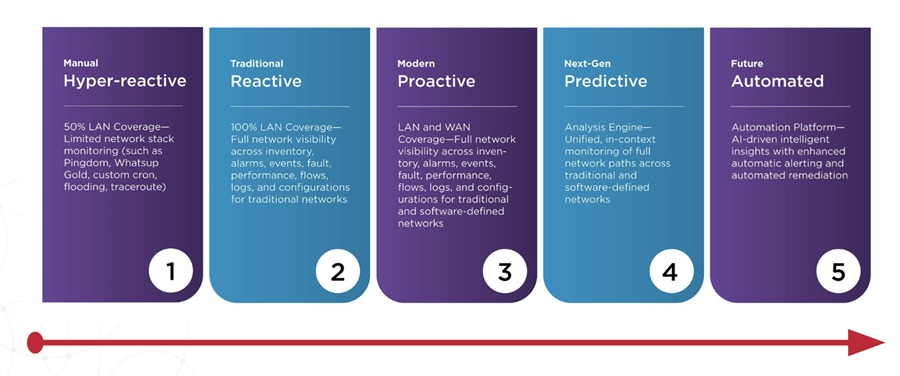Juniper Networks announced several new enhancements that make it even easier to deliver predictable, reliable and measurable user experiences from client to cloud.
By integrating ChatGPT with Marvis, a virtual network assistant (VNA) driven by Mist AI, Juniper customers and partners can now easily access public-facing knowledgebase information using ground-breaking Large Language Models (LLM).
In addition, new Marvis integrations with Zoom enable superior video conferencing experiences while significantly reducing troubleshooting costs. With these enhancements, plus a new Wi-Fi 6E access point, Juniper is expanding its AIOps offering.
“AI is the next step in automating tasks that typically require a human IT domain expert, improving how IT teams operate the network with AI-driven tools like Marvis and its conversational interface,” said Bob Friday, Chief AI Officer at Juniper Networks. “Juniper Mist has always been a pioneer in utilizing proven AIOps to deliver assured user experiences from client to cloud, and with these latest LLM enhancements, Marvis will provide even more actionable knowledge and be an even more valuable member of the IT team.”
The Marvis VNA and its conversational interface were first introduced on June 7, 2018, as an essential part of IT, delivering proactive troubleshooting, predictive actions and exceptional insight into user experience via natural language processing and understanding (NLP/NLU). This enabled Juniper customers to easily delve into the network, user and application experiences (in real time) via simple language queries.
With the recent launch of LLM tools like ChatGPT, Juniper has been able to expand the conversational interface (CI) capabilities of Marvis to deliver even more human-like conversational capabilities, particularly with respect to documentation and support issues. Specifically, Marvis now leverages a LLM API to respond to user queries for technical documentation and other publicly available historical knowledge base information. For example, customers can ask Marvis “What do the Access Point LED lights mean?” or “List steps to configure Juniper campus fabric” and receive an accurate and direct response in the typical ChatGPT style in addition to a list of relevant documents.
Juniper is also leveraging 3rd party user-experience data from the Zoom cloud. By joining gigabytes of user experience Zoom data with gigabytes of network feature data, Marvis now has a deep learning model that can accurately predict user experience performance, allowing Marvis to use advanced AI/ML explainability techniques to quickly identify the root cause of video conferencing problems. In addition to real-time proactive troubleshooting (and self-driving corrective actions, if possible), Marvis learns trends to quickly detect and correct anomalies as well as predict future issues. This insight gives IT teams an edge in reducing Zoom support tickets and the time to repair issues.
Users can now leverage the Marvis conversational interface to easily access Zoom data insights via simple language queries, like “What was wrong with John Smith’s Zoom call?” or “List users with a bad Zoom experience.”
The Latest
According to Auvik's 2025 IT Trends Report, 60% of IT professionals feel at least moderately burned out on the job, with 43% stating that their workload is contributing to work stress. At the same time, many IT professionals are naming AI and machine learning as key areas they'd most like to upskill ...
Businesses that face downtime or outages risk financial and reputational damage, as well as reducing partner, shareholder, and customer trust. One of the major challenges that enterprises face is implementing a robust business continuity plan. What's the solution? The answer may lie in disaster recovery tactics such as truly immutable storage and regular disaster recovery testing ...
IT spending is expected to jump nearly 10% in 2025, and organizations are now facing pressure to manage costs without slowing down critical functions like observability. To meet the challenge, leaders are turning to smarter, more cost effective business strategies. Enter stage right: OpenTelemetry, the missing piece of the puzzle that is no longer just an option but rather a strategic advantage ...
Amidst the threat of cyberhacks and data breaches, companies install several security measures to keep their business safely afloat. These measures aim to protect businesses, employees, and crucial data. Yet, employees perceive them as burdensome. Frustrated with complex logins, slow access, and constant security checks, workers decide to completely bypass all security set-ups ...

In MEAN TIME TO INSIGHT Episode 13, Shamus McGillicuddy, VP of Research, Network Infrastructure and Operations, at EMA discusses hybrid multi-cloud networking strategy ...
In high-traffic environments, the sheer volume and unpredictable nature of network incidents can quickly overwhelm even the most skilled teams, hindering their ability to react swiftly and effectively, potentially impacting service availability and overall business performance. This is where closed-loop remediation comes into the picture: an IT management concept designed to address the escalating complexity of modern networks ...
In 2025, enterprise workflows are undergoing a seismic shift. Propelled by breakthroughs in generative AI (GenAI), large language models (LLMs), and natural language processing (NLP), a new paradigm is emerging — agentic AI. This technology is not just automating tasks; it's reimagining how organizations make decisions, engage customers, and operate at scale ...
In the early days of the cloud revolution, business leaders perceived cloud services as a means of sidelining IT organizations. IT was too slow, too expensive, or incapable of supporting new technologies. With a team of developers, line of business managers could deploy new applications and services in the cloud. IT has been fighting to retake control ever since. Today, IT is back in the driver's seat, according to new research by Enterprise Management Associates (EMA) ...
In today's fast-paced and increasingly complex network environments, Network Operations Centers (NOCs) are the backbone of ensuring continuous uptime, smooth service delivery, and rapid issue resolution. However, the challenges faced by NOC teams are only growing. In a recent study, 78% state network complexity has grown significantly over the last few years while 84% regularly learn about network issues from users. It is imperative we adopt a new approach to managing today's network experiences ...

From growing reliance on FinOps teams to the increasing attention on artificial intelligence (AI), and software licensing, the Flexera 2025 State of the Cloud Report digs into how organizations are improving cloud spend efficiency, while tackling the complexities of emerging technologies ...
